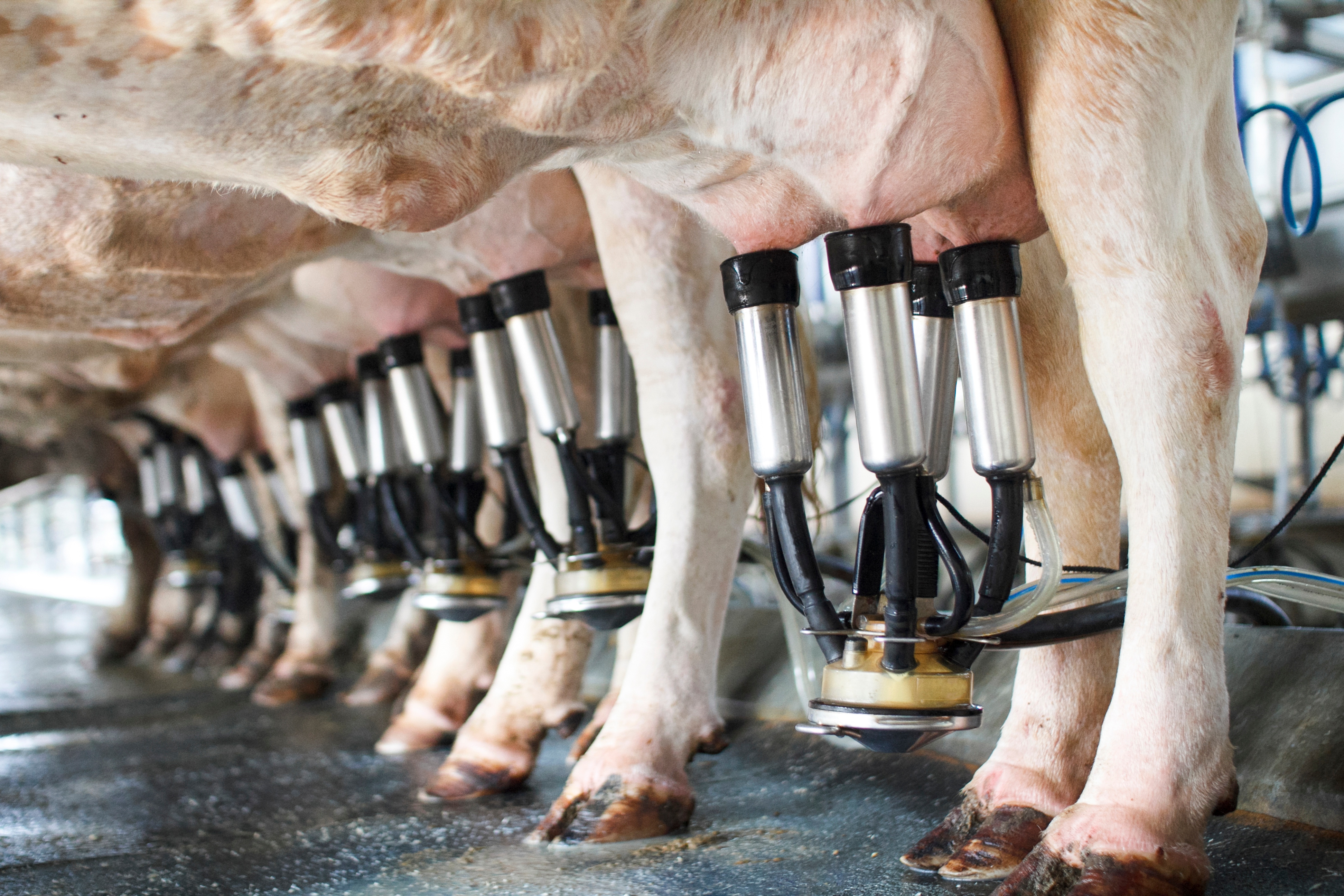
Milk Production
Cows walk to the milking center to be milked. Typical herds are milked two or three times each day, depending on some factors including type of parlor used and management decisions.
Cows are moved from the freestall barn quietly around 30 minutes before being milked to reduce adrenaline production.
The holding area is where a group of cows stands to wait for their turn to be milked. At the rear of the holding area is a mechanical crowd gate, which moves forward as cows walk up a sloped floor to be milked. Most crowd gates sound a buzzer that signals to the cows the gate will move. Cows are easily trained to move forward when the buzzer sounds, so the gate does not actually push the cows forward. Instead, they move and the gate follows close behind to prevent cows from going back to the barn before they have been milked.
Milking Parlor
Cows walk from the holding area into an available stall in the milking parlor.
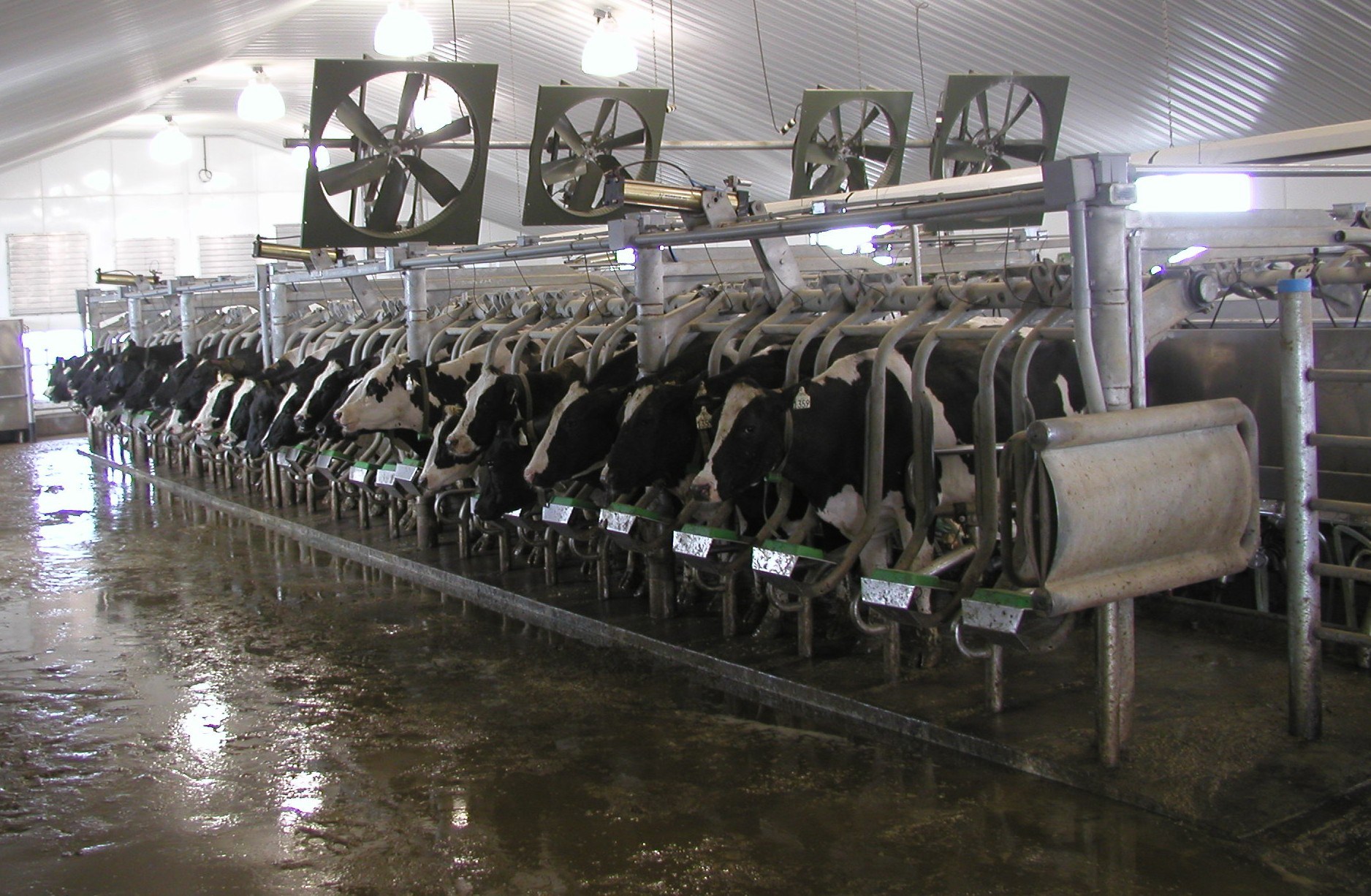
Typical parlors have stalls arranged next to one another in a parallel, herringbone, or rotary configuration. The cows walk forward to fill up the available stalls.
In some parlor configurations, a lowered gate in front of the cows keeps them in the proper position to be milked.
A worker on a floor space next to and below the cows then walks to each cow and cleans the teats, usually by applying a special cleaner to the teats that removes dirt and kills bacteria followed by hand wiping the teats using a separate clean rag for each cow. The clean teats are then dried with separate clean paper towels for each cow.
The initial wiping and drying of the teats stimulates the milk letdown response.
Foremilk stripping is performed to remove several squirts of milk from each teat (and quarter of the cow’s udder).
The milk is collected into a strip cup or ejected onto the floor and examined for clots or flakes in the milk that indicate clinical mastitis. If a cow has mastitis, it will not get milked here, and instead will be separated from the group after leaving the parlor and entering a special treatment barn.
Sick cows get milked by hand in the treatment barn and the milk gets discarded. Foremilk stripping also removes milk from the udder that is highest in somatic cell count (SCC) from the teat ends where it collects, improving milk quality.
If nothing out of the ordinary is noticed during foremilk stripping, the worker attaches the milking machine to the cows teats shortly after being cleaned and stripped, and the cow is automatically milked.
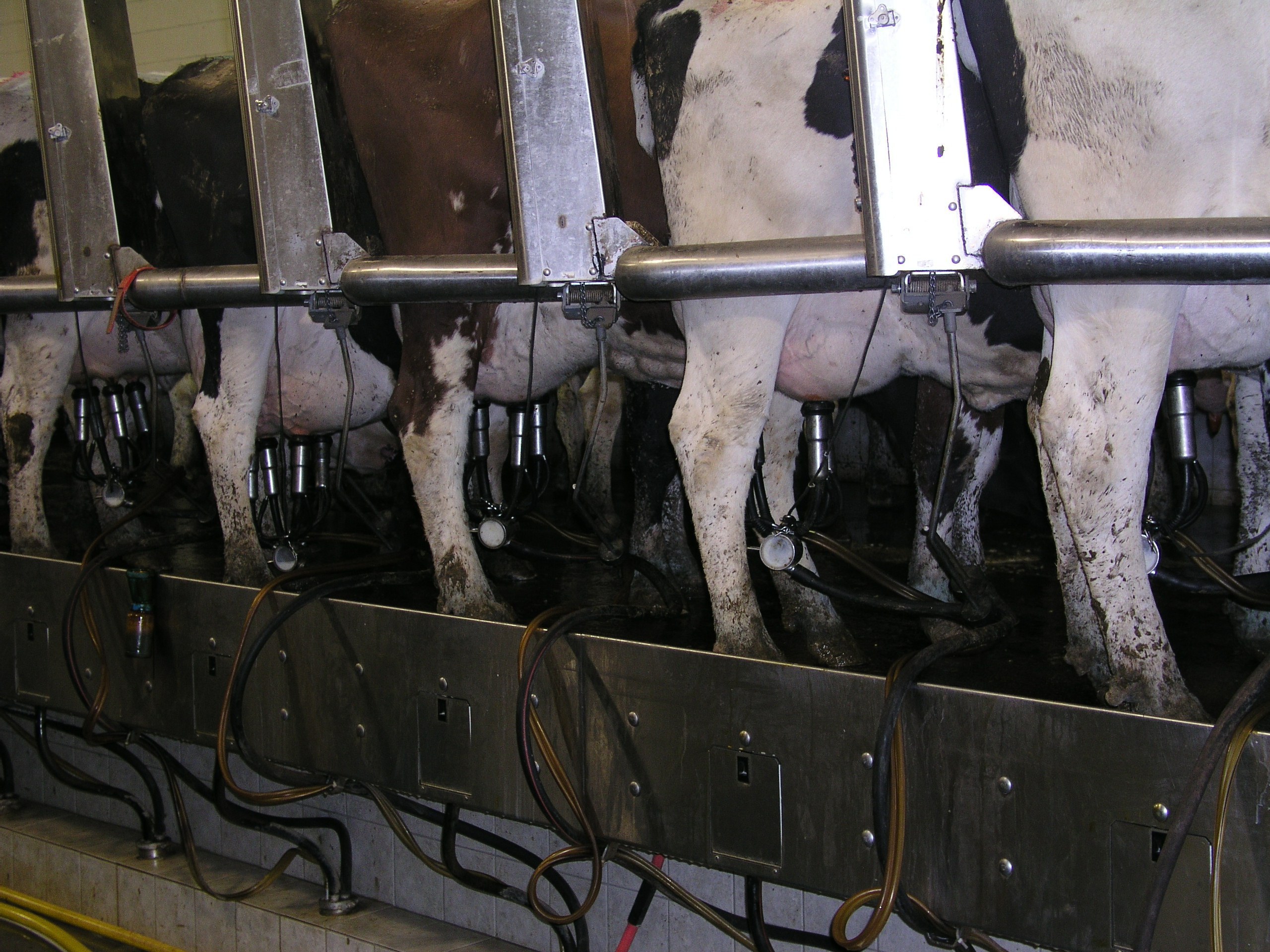
The milking machine is typically attached to the teats one minute after preparation, and milking is usually completed within 5 to 7 minutes for each cow.
After 5 minutes, milk flow usually slows to a level that causes the milking machine to automatically detach from the cow’s teats.
The teats are then dipped in a post-milking germicidal teat dip to protect them from pathogens on the skin that could cause mastitis by entry through the milk canal, which stays open for up to an hour after milking.
After all cows in the current group have finished milking, the gate opens in front of them and they are free to return to the barn through a return alley. Learn more about what cows do inside the barn in our Herd Management section.

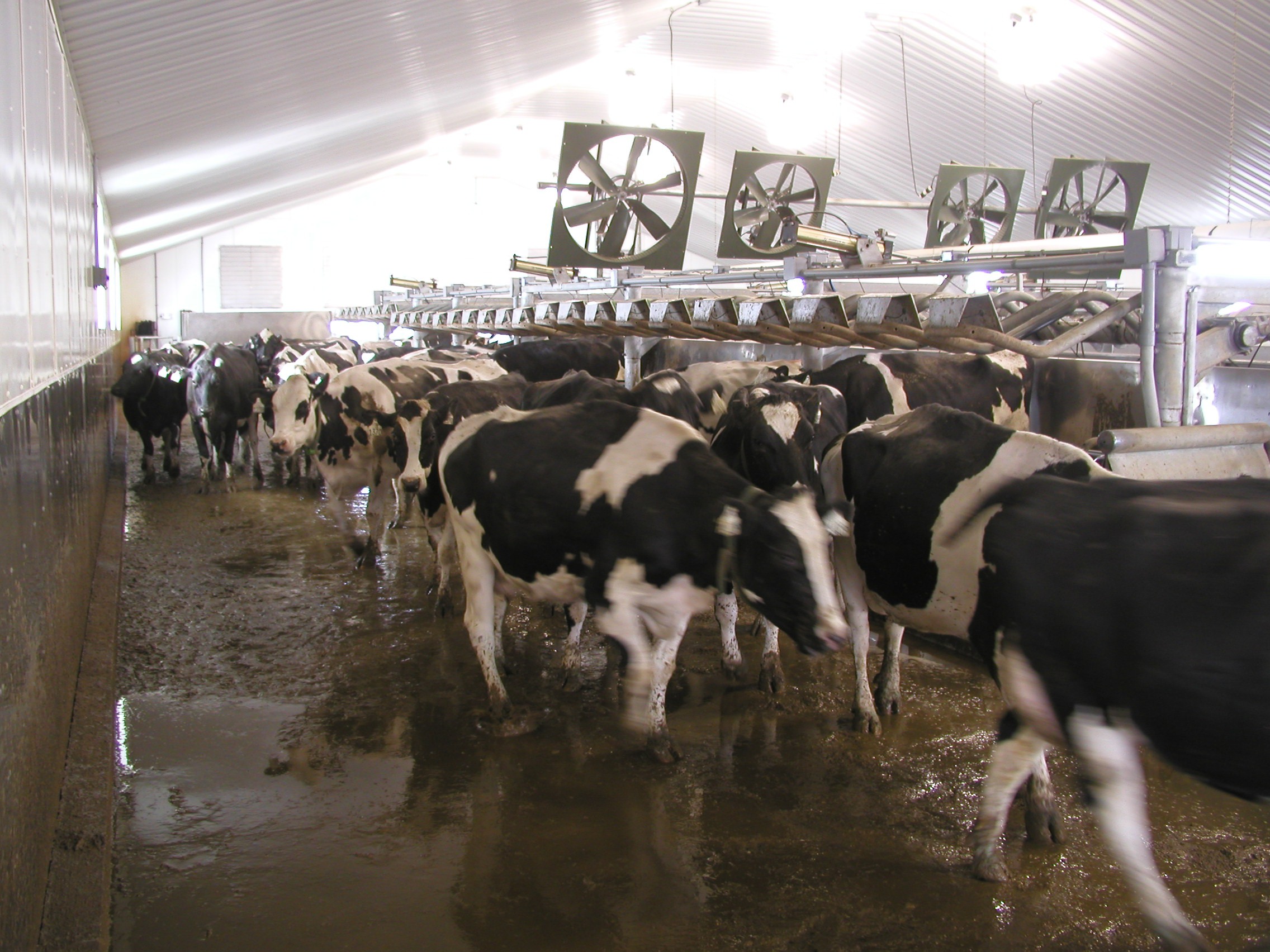
When the cows leave the parlor, they typically pass through a sorting gate. The sorting gate automatically separates cows which may have been flagged for veterinary care or other reasons.
The cows that do not require further examination exit through the sorting gate to rejoin their group in the barn.
After a group of cows has been milked, the milking parlor is meticulously cleaned to prepare for the next group.
Robotic Milkers
Robotic milking machines are becoming a popular alternative to the traditional milking parlor. These machines milk the cows when the cows want to be milked. The typical capacity for one milking unit is 50 to 70 cows.
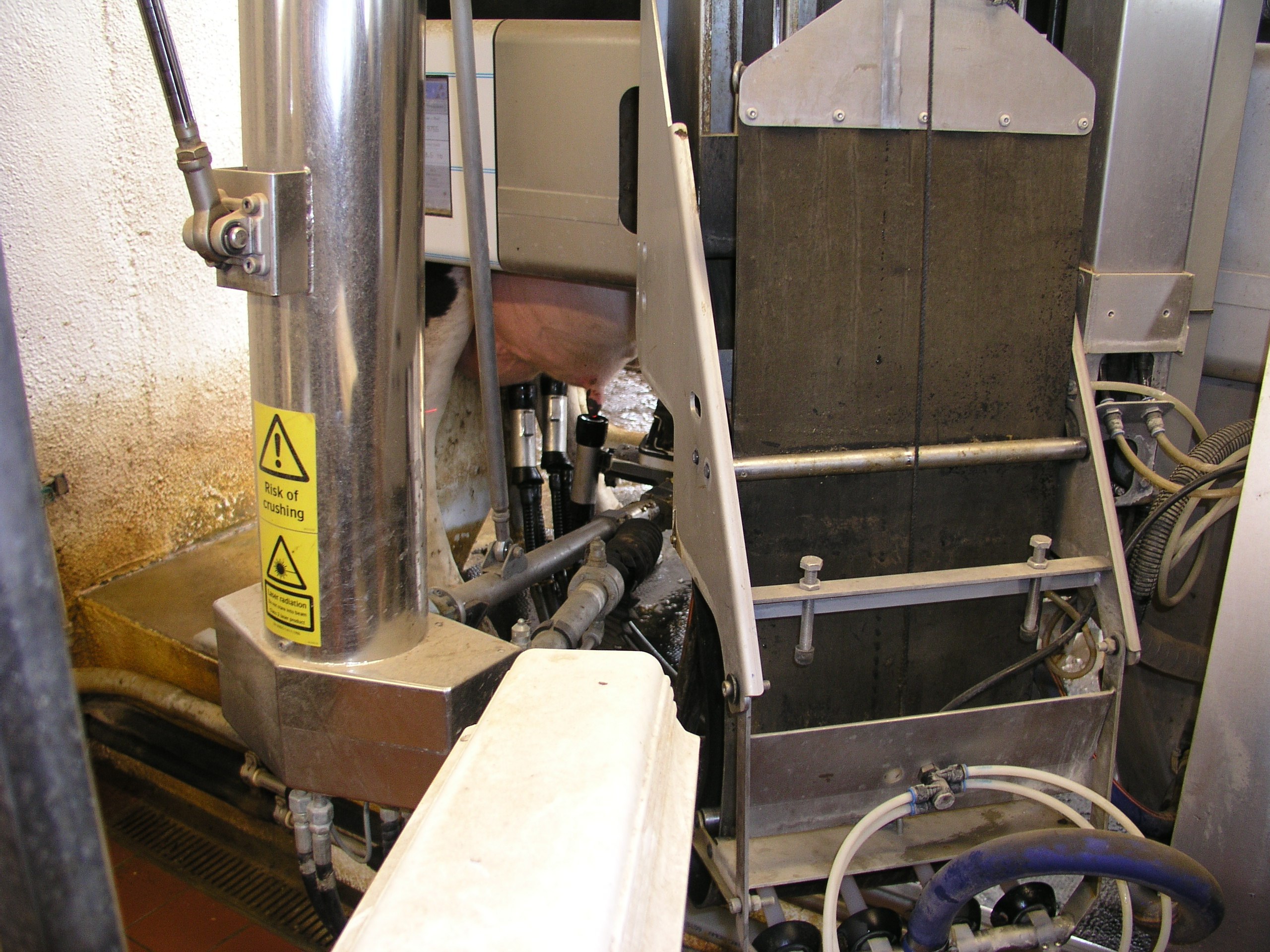
They reduce labor requirements by automating every step of the milking process: teat cleaning and preparation, milker attachment, milking, post treatment, and cow sorting upon exit.